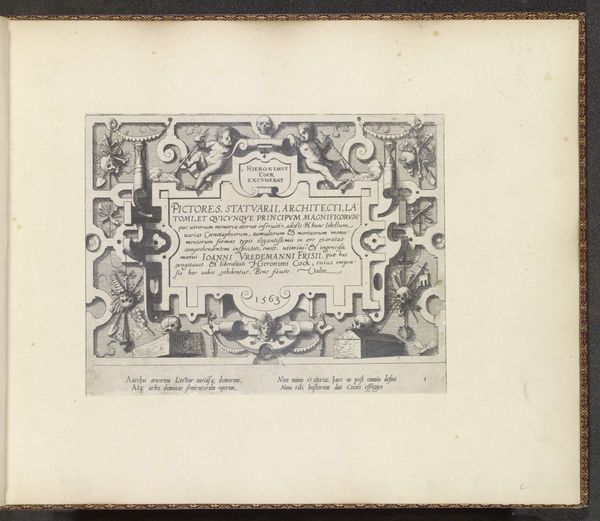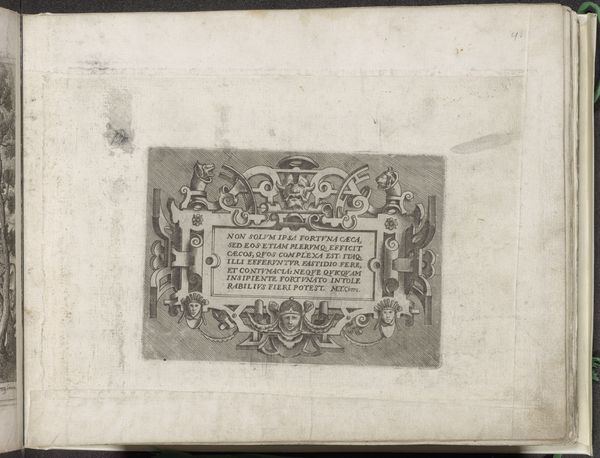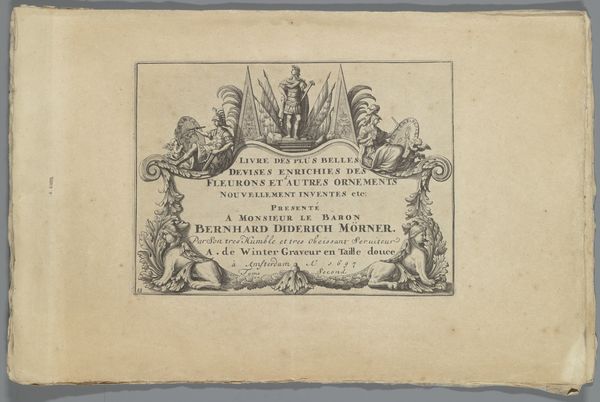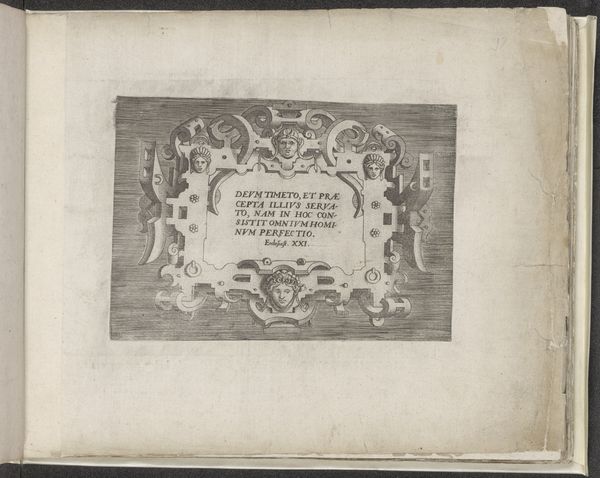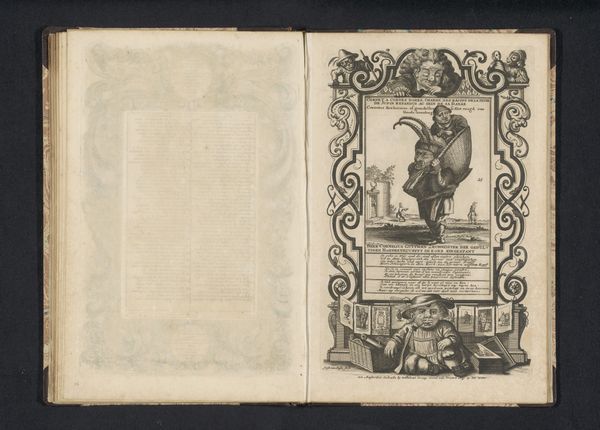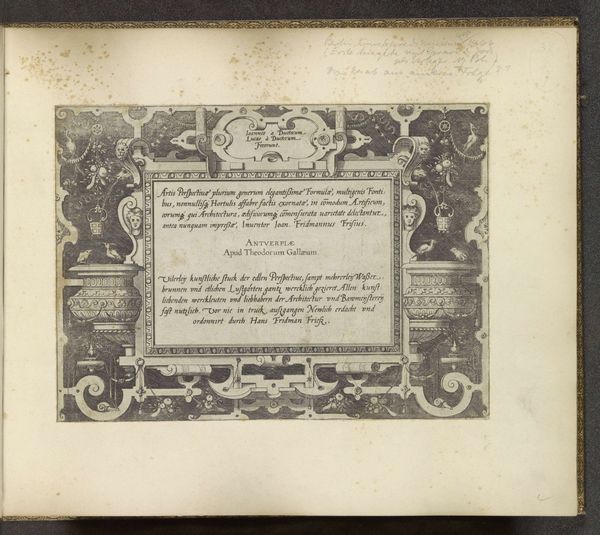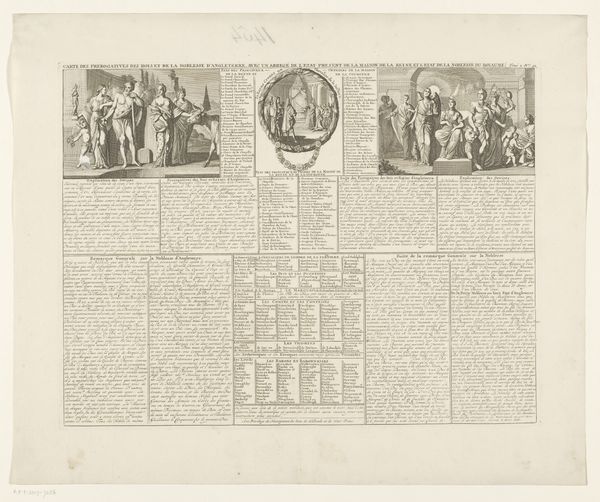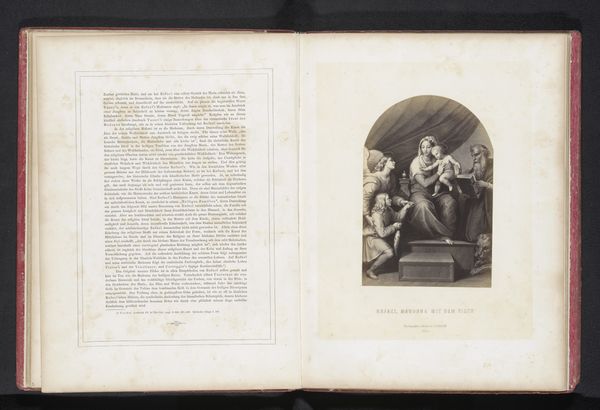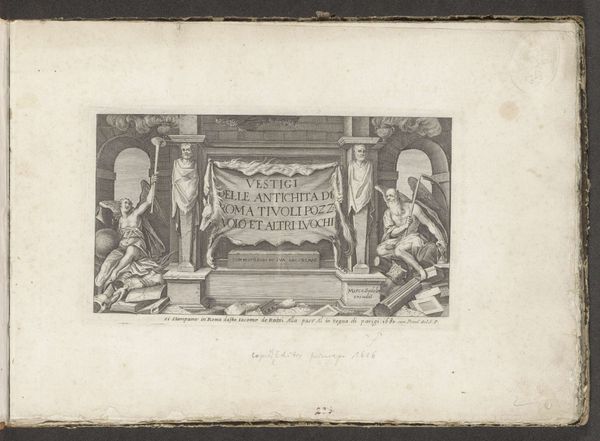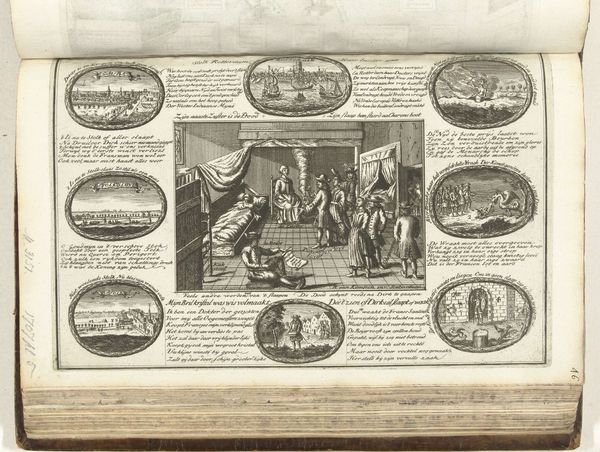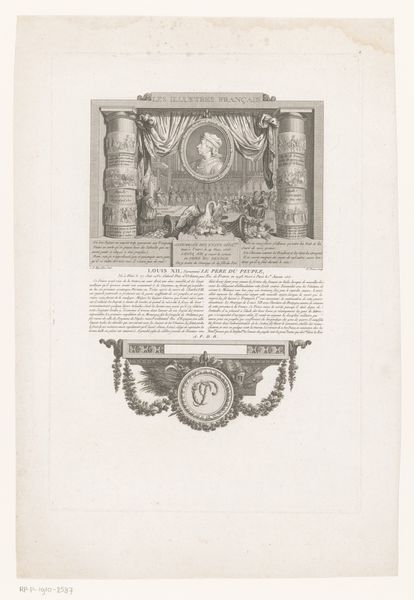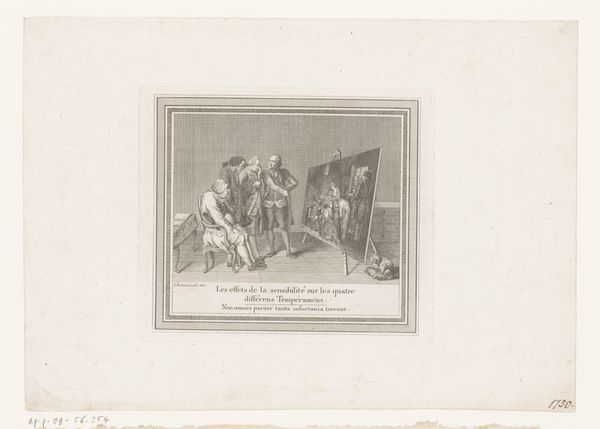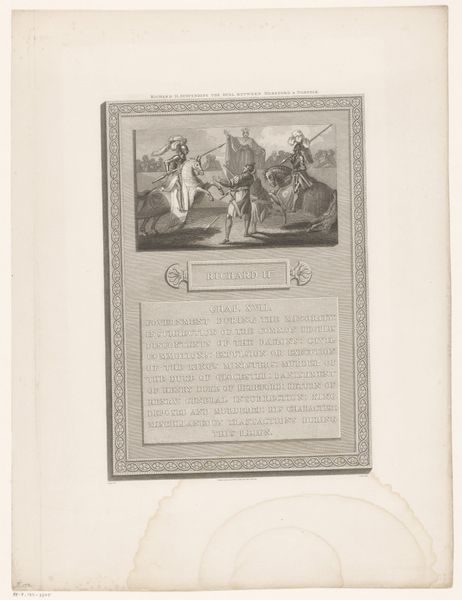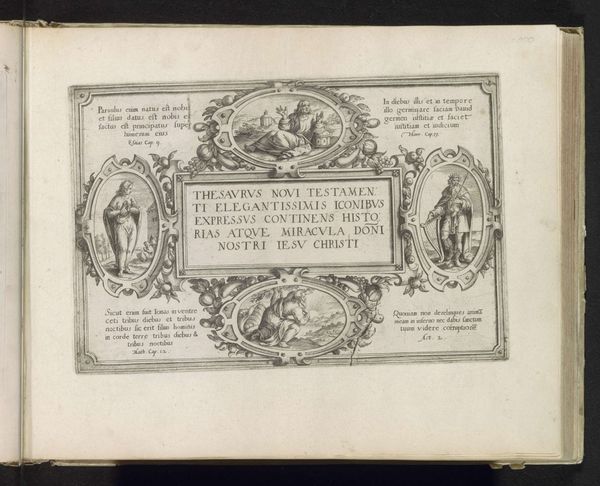
print, paper, ink, engraving
#
allegory
#
baroque
#
ink paper printed
# print
#
book
#
paper
#
ink
#
pen-ink sketch
#
sketchbook drawing
#
history-painting
#
engraving
Dimensions: height 153 mm, width 265 mm
Copyright: Rijks Museum: Open Domain
Curator: This engraving, titled "Stenen tablet geflankeerd door obelisken met hiërogliefen," was made around 1680, the work of an anonymous artist using ink on paper. The intricate detail achieved with what must have been immense labor is quite compelling, isn't it? What stands out to you initially? Editor: The precision of the line work is astonishing! It's like looking at a tiny world captured on paper. The obelisks, the cherubs, and of course, all of that tiny text—how do you think this print functions as an object, beyond just being an image? Curator: Consider the historical context: printmaking in the 17th century was a powerful tool for disseminating knowledge and ideas. Engravings weren't just decorations; they were vehicles of information. Here, you see the commingling of classical imagery with these supposed Egyptian motifs. But how "accurate" are they, really? Think about how the production of these images shapes our understanding, or misunderstanding, of other cultures. Editor: That's interesting. So it’s not necessarily about faithful reproduction but more about using these images to convey certain ideas within the European context? Was the material quality of the print itself significant? Curator: Absolutely. The reproducibility of prints democratized art to a degree, making images accessible beyond the wealthy elite. But the act of making this – the artist selecting a copper plate, painstakingly engraving the design, the labor, and the process…it's easy to overlook these crucial material aspects when we focus solely on the image's content. How did the act of reproduction affect its perceived value then, as compared to something unique such as a painting? Editor: I see. So it's not just about what the image depicts, but also about how it was made and who had access to it. Thanks, that's given me a lot to think about. Curator: Precisely. And by considering the material reality, the engraving becomes less a window into another world and more a mirror reflecting the complexities of 17th-century European culture.
Comments
No comments
Be the first to comment and join the conversation on the ultimate creative platform.
